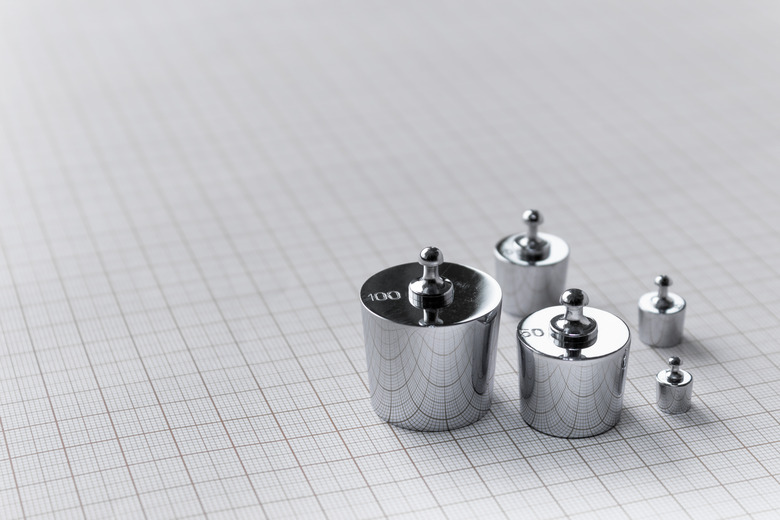How To Calculate Cubic Meters To Kilograms
When you first learned how to convert from one unit of measurement to another – for example, converting from inches to feet, or from meters to centimeters – you may have learned to express the conversion as a fraction. The same trick makes it easy to convert from one type of measurement to another – for example, converting from volume to weight. But there's a big catch: You have to know exactly how the volume and weight (or whichever other measurements you're asked to use) compare to each other.
TL;DR (Too Long; Didn't Read)
Write out the weight/volume conversion ratio as a fraction, with cubic meters on top and kilograms on the bottom. Then multiply this by the number of cubic meters you're converting into kilograms.
Converting From Volume to Weight
Converting From Volume to Weight
Here's a real-world example of when you might need to convert from volume to weight: Imagine that your friend just bought a house with a big back yard and wants to put in a garden. She's ordered two cubic meters of topsoil and is wondering how much all that dirt will weigh.
You already know the volume in this case – 2 m3 – so next you need to figure out how the volume of topsoil compares to its weight. If you're working textbook problems, you will get this information. In the real world, you might have to do a little detective work. Perhaps your curious friend calls the topsoil company and finds out that one cubic meter of topsoil usually weighs about 950 kg. Now you have all the information you need to perform your conversion.
1. Write the Weight/Volume Relationship
Write the relationship between weight and volume out as a fraction, with weight on top and volume on the bottom. Because you know that one cubic meter of topsoil weighs 950 kg, your fraction will look like this:
950 kg / 1 m3
TL;DR (Too Long; Didn't Read)
The unit of measure that you're converting _into_ always goes on the top of the fraction. So if you were converting from weight into volume, this fraction would be the other way around: 1 m3 / 950 kg.
2. Multiply by Volume
Multiply the volume you're finding the weight for times the fraction from Step 1. Since you're finding the weight of 2 m3 of topsoil, you'll have the following:
2 m3 × (950 kg / 1 m3)
Which you can also write as:
(2 m3 × 950 kg) / 1 m3
3. Simplify the Results
Before you start doing the arithmetic, note one very important way that you can simplify the expression just given: The units of measure in both numerator and denominator, m3 or meters cubed, cancel each other out. So your fraction actually looks like this:
(2 × 950 kg) / 1
Which simplifies to:
2 × 950 kg
Which gives you your final answer and weight for two cubic meters of topsoil, 1900 kg.
Cite This Article
MLA
Maloney, Lisa. "How To Calculate Cubic Meters To Kilograms" sciencing.com, https://www.sciencing.com/calculate-cubic-meters-kilograms-6338574/. 10 May 2018.
APA
Maloney, Lisa. (2018, May 10). How To Calculate Cubic Meters To Kilograms. sciencing.com. Retrieved from https://www.sciencing.com/calculate-cubic-meters-kilograms-6338574/
Chicago
Maloney, Lisa. How To Calculate Cubic Meters To Kilograms last modified March 24, 2022. https://www.sciencing.com/calculate-cubic-meters-kilograms-6338574/
